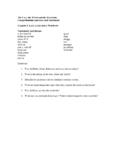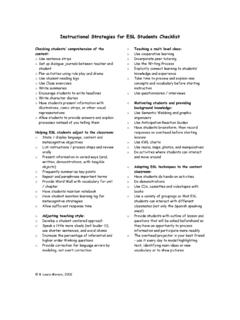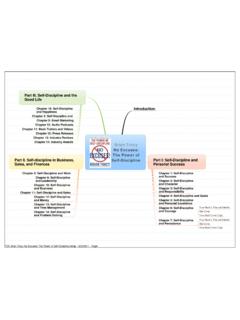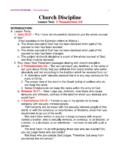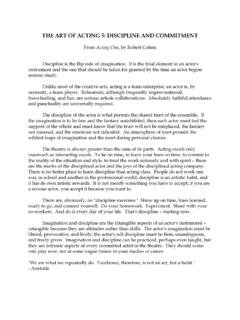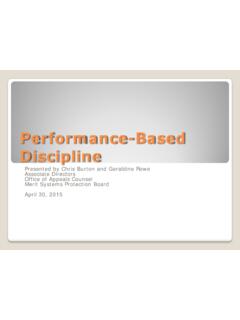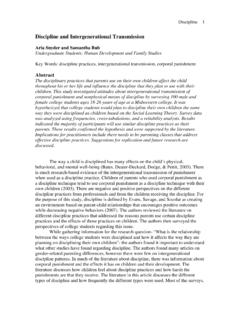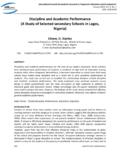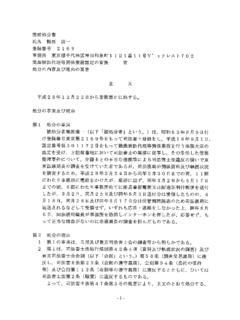Transcription of Discipline of the Section 504 Student - San …
1 San Antonio Independent School District Page 1 of 8 Section 504 Discipline . June 2005 Discipline OF THE 504 Student Change of Placement Rule: A 504 child s removal from the normal placement for more than ten (10) days constitutes a change in placement, which generally is defined as a material and significant alteration in the services provided the child, or in the setting where they are provided. Pattern of Exclusion Rule: A child may be removed from his placement for more than ten (10) days over a school if each removal is ten (10) days or less, and if the removals do not indicate a pattern of exclusions. At some point after a series of removals in a school year totals 10 days, prior to any additional removal the 504 Committee must meet, undertake a 504 evaluation, and determine whether the behavior giving rise to the new disciplinary removal is related to the child s handicapping condition or an inappropriate placement.
2 Should the Committee determine that a link is present, the removal cannot occur. This process is repeated for each proposed removal after the pattern of exclusion has been reached. David M. Richards, Attorney at Law Richards, Lindsay, & Martin, L. LP. San Antonio Independent School District Page 2 of 8 Section 504 Discipline . June 2005 A Simplified Method for Understanding Discipline and Manifestation Determination under 504 by Jose L. Mart n, Attorney at Law Richards Lindsay & Mart n, 1. Learn to identify a short-term disciplinary removal under 504. A short-term removal occurs when a campus administrator removes a child from his normal setting for less than 10 consecutive school days for disciplinary purposes.
3 The most common example is a suspension to the home (in Texas, limited to 3 school days per offense). In-school suspension (ISS) should be considered a short-term removal, unless the smart ISS criteria discussed below is met, in which case the removal days may not count as disciplinary removal days. 2. Learn to identify a long-term disciplinary removal under 504. A long-term removal is one of over 10 consecutive school days, usually in the form of a removal to a disciplinary alternative education program (AEP) or expulsion. 3. Do not mix up the rules for long-term and short-term removals learn and apply the rules separately. It s easy to get confused if you try to learn and apply the separate rules for long and short-term removals as simultaneous concepts.
4 Rather, learn and apply these rules as two separate sets of rules. This eliminates a lot of mixed-up 504 Discipline questions, such as is it 10 cumulative or 10 consecutive days? There are really two sets of rules that involve a 10-day timeline, and trying to learn them simultaneously frequently causes confusion. 4. For short-term removals involving 504 students , campuses start the year with 10 free removal days at their disposal. At the start of the school year, imagine the school is given 10 free removal days for each 504-eligible Student . These days are free under 504 because they can be used without the need to convene a 504 committee meetings, without a manifestation determination, and generally, without worrying about any 504 procedure or safeguard.
5 They can be imposed as they would be in the case of a nondisabled Student who commits the same disciplinary offenses. San Antonio Independent School District Page 3 of 8 Section 504 Discipline . June 2005 5. Although schools may go over the 10-day total, at a certain point the accumulated removals will constitute a pattern of exclusion, which triggers the manifestation requirement. At a certain point, accumulations of too many short-term removals will become a pattern of exclusion (in Office for Civil Rights (OCR) lingo), which is considered an overall long-term removal that first requires a manifestation determination. OCR developed this rule over time, and it was also exported into the IDEA Discipline regulations.
6 Whether accumulations of short-term removals after the 10-day mark constitute a pattern of exclusion depends on how long each removal is, how close they are to each other, and how many they add up to overall. The rule might be designed vaguely in order to promote caution among school administrators who are considered disciplinary removals. Generally, it s good advice for schools to limit forays into the over-10-total-school-days danger zone. And, obviously, the higher the number of removals after the 10-day total is reached, the more precarious the school s legal position becomes. 6. Before short-term removals add up to 10 total school days, have a 504 meeting to address behavior. The best preventive measure in 504 disciplinary matters is to convene a 504 meeting before short-term removals add up to 10 total days.
7 The 504 committee can decide to develop a BIP, provide regular counseling, evaluate the Student further, or make other adjustments to the Student s 504 plan. The idea is to take action before a disciplinary issue becomes a major problem. 7. For long-term removals, proceed to a manifestation determination 504 meeting as soon as you can, and before the removal reaches 10 consecutive school days. As soon as possible after the campus initiates a long-term disciplinary removal, an 504 committee meeting must be convened to determine if the Student s alleged offense was directly related to their disability. This is called the manifestation determination. In addition, the rule also requires the 504 committee to determine whether the behavior is related to an inappropriate 504 program.
8 The meeting must definitely take place before the long-term removal reaches its 10th consecutive day. The right to a manifestation determination in instances of threat of long-term removal is the primordial safeguard of 504 disciplinary procedures. It is a doctrine that was first developed in federal court cases starting in the late-70 s, and later adopted by the Department of Education as policy in the 80 s. The manifestation determination essentially decides whether the Student can be subjected to long-term removal or not. If the 504 committee properly determines that the behavior in question is not related to disability, then the Student can be subjected to regular San Antonio Independent School District Page 4 of 8 Section 504 Discipline .
9 June 2005 disciplinary procedures, as in the case of similarly-situated nondisabled Student . If the 504 committee determines that the behavior is related to disability, then a long-term removal cannot take place. This, the quality of the manifestation determination is crucial to the long-term removal; 504 members are well-advised to prepare and pre-staff for manifestation determinations. San Antonio Independent School District Page 5 of 8 Section 504 Discipline . June 2005 OTHER MANIFESTATION DETERMINATION ISSUES by Jose L. Mart n, Attorney at Law Richards Lindsay & Mart n, The impulsivity argument A popular manifestation determination argument, especially in cases of students with ADHD or other behavioral disorders, is that the Student s behavior was related to their disability because the offense was impulsive.
10 In these situations it is crucial to have detailed information about the offense, particularly the timeframe for the behavior and the degree of planning that was involved. The longer the timeframe of the behavior, and the higher the degree to planning that must be involved, the less likely that the behavior was impulsive, or without thought. Foreseeability In manifestation determinations, an important question is whether the existing evaluation data would lead one to predict that a certain behavior might be exhibited. If from the evaluation data, a reasonable person would conclude that the behavior is likely to take place, the 504 committee should find that the behavior is related to disability.
